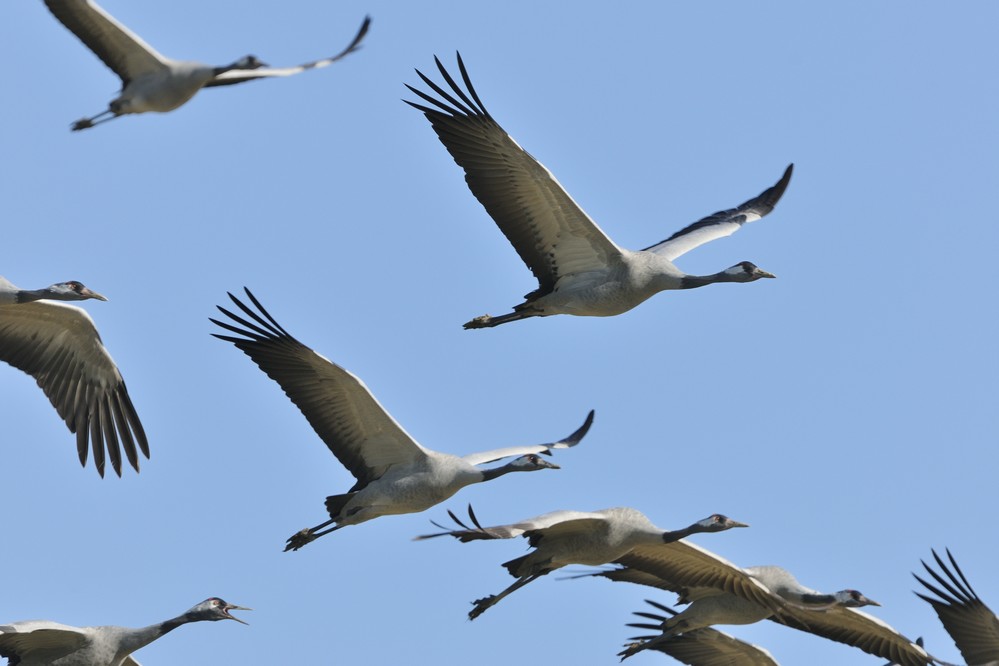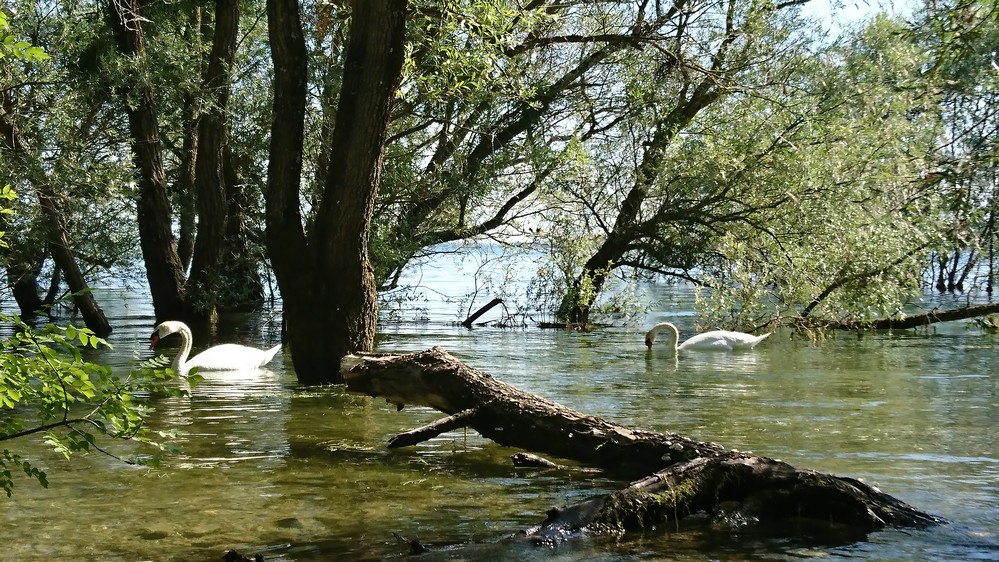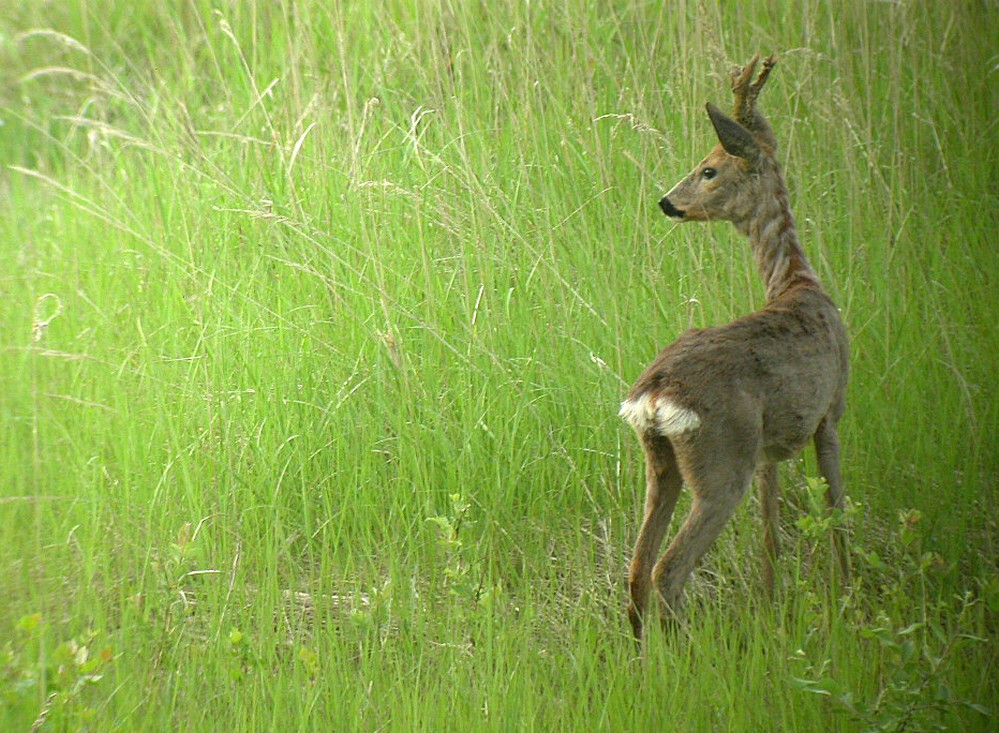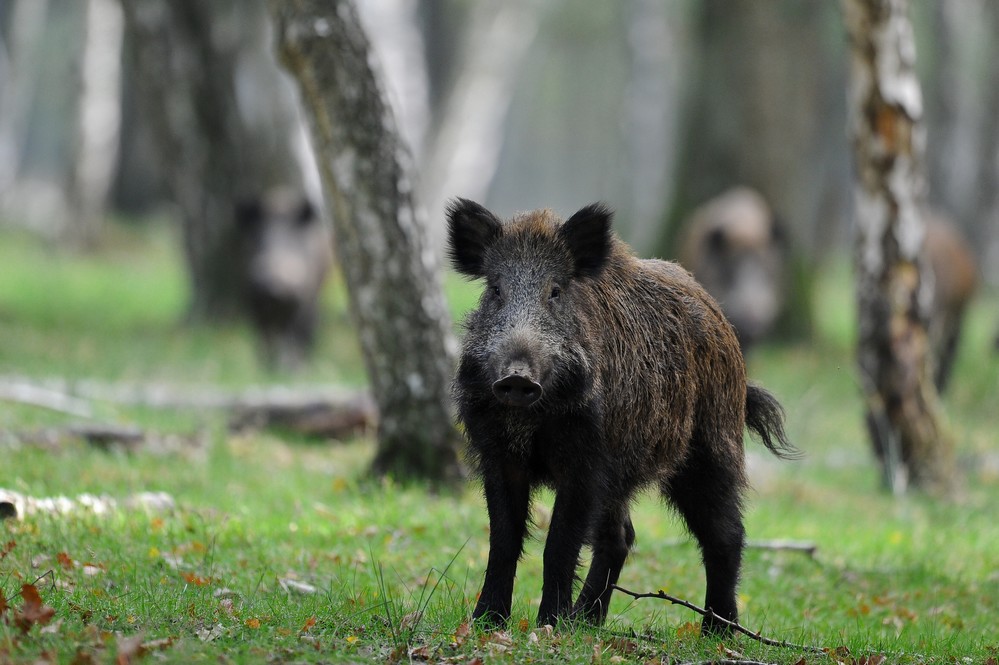The Parc Pierre-Pitois is tamed, even domesticated, but the Grands Lacs de Champagne is home to an intense wildlife.
The myriad of migrating birds who leave to spend winter in warmer climates, far from the harshness of their native land, are symbolic of this untamed borderless nature environment.
Four bird observatories have been created near Troyes La Champagne, around the lacs: d’Orient in Geraudot, Temple in Piney and Amance in Radonvilliers where you can admire the common crane, black stork, white-tailed eagle and Bewick swan to your heart’s content.
Almost three hundred bird species have been observed on these vast lakes, either just passing through or permanent residents. Some only stay two months a year, like the little egret; others live here all year round, like the common kingfisher and the black-headed gull.
There is always something happening in the 5,000 hectares of the Grands Lacs de Champagne, whatever the season!
A thunderous deluge !
You hear it before you see it: the rumbling sounds like a waterfall. The Saint-Julien-les-Villas spillway is one of the Troyes area’s attractions.
Accessible via Rue Danton, this hydraulic machinery regulates the flow of the Seine. It has been partially decorated like a cruise ship. Situated on the lake bike path, it is a pleasant place to stop for a swim or a picnic.
But beware: there are no lifeguards, and don’t expect to find any fine sand.

To complete the excursion, we are going to tell you a secret that many Troyes residents don’t know : there is another spillway in Troyes – a natural one – which is where the Seine arrives in the town, still slightly unwilling. Accessible via Impasse des Dames-Colle, you will find a little inlet where you can stop to contemplate an unusual and refreshing sight.
A miraculous fountain
It is also possible to follow a waterway from its source.
The source of the Fontaine Saint-Martin stream can be found in the street of the same name in Saint-André-les-Vergers.
It’s location is a little surprising at first glance, being on the edge of an industrial estate. But as soon as you arrive at the entrance, you are drawn in by the cool, refreshing atmosphere of this green skylight. The source is just there, surrounded by a pretty wooden fence, drawing you to the enticing wooded area which lines its path.
The stream is directed to the Canal de la Fontaine Saint-Martin before joining Ile Germaine and the complex network of the Vienne rivers. Fruit trees were originally planted in the orchards along the canal. The babble of the washerwomen working in the clear water still haunts the area.
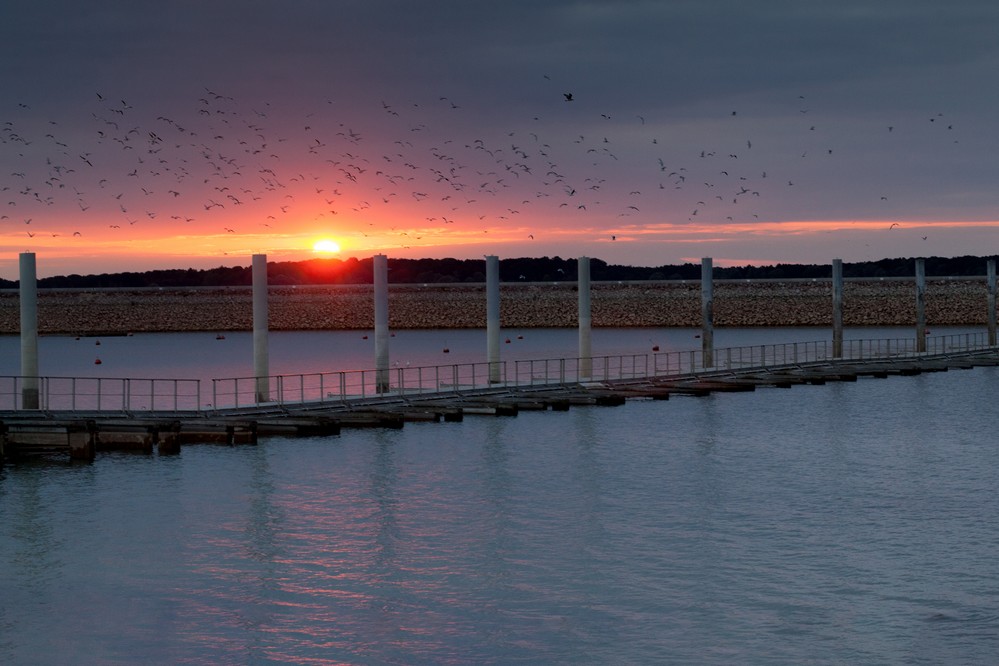
The lakes: a refuge for endangered mammals
The lakes are also home to a multitude of land-living animals, particularly the mammals native to our region: roe, wild boars and deer which can be heard belling in the forest from the end of September to the beginning of October. But is has also become a refuge for more unexpected grazers over the last few years.
Did you think aurochs had completely disappeared from the face of the earth? You were right – well, nearly! The wildlife centre in the Forêt d’Orient is home to “reconstituted” aurochs — that is their official name — also known as Heck cattle and the result of very careful genetic selection.
They are the result of successful bovine crossing which has maintained some of the characteristics of the original auroch species. Those found on the banks of the Lac d’Orient are close to the original species, now lost forever.
Heck cattle are not the only curiosity in the Espace Faune (wildlife centre), whose entrance is between Mesnil-Saint-Père and the Maison du Parc. Modern aurochs rub shoulders with European bison, (still an endangered species unlike its American cousin), the European elk (still found in the
north of the Old Continent and in the New World), and the tarpan or Eurasian wild horse.
Also a result of genetic cross-breeding like the modern auroch, the tarpan is a race of horse which no longer exists, and which has been recreated from a selection of Konik Polski horses.
With a little patience and good binoculars you can observe these rare and exceptional animals living in guarded liberty in their enclosure on the 89-hectare peninsula. Their reintroduction here is not arbitrary: these ruminants and members of the horse family lived here in the past. The return to their original habitat is part of a European programme to build up the population of its livestock.
